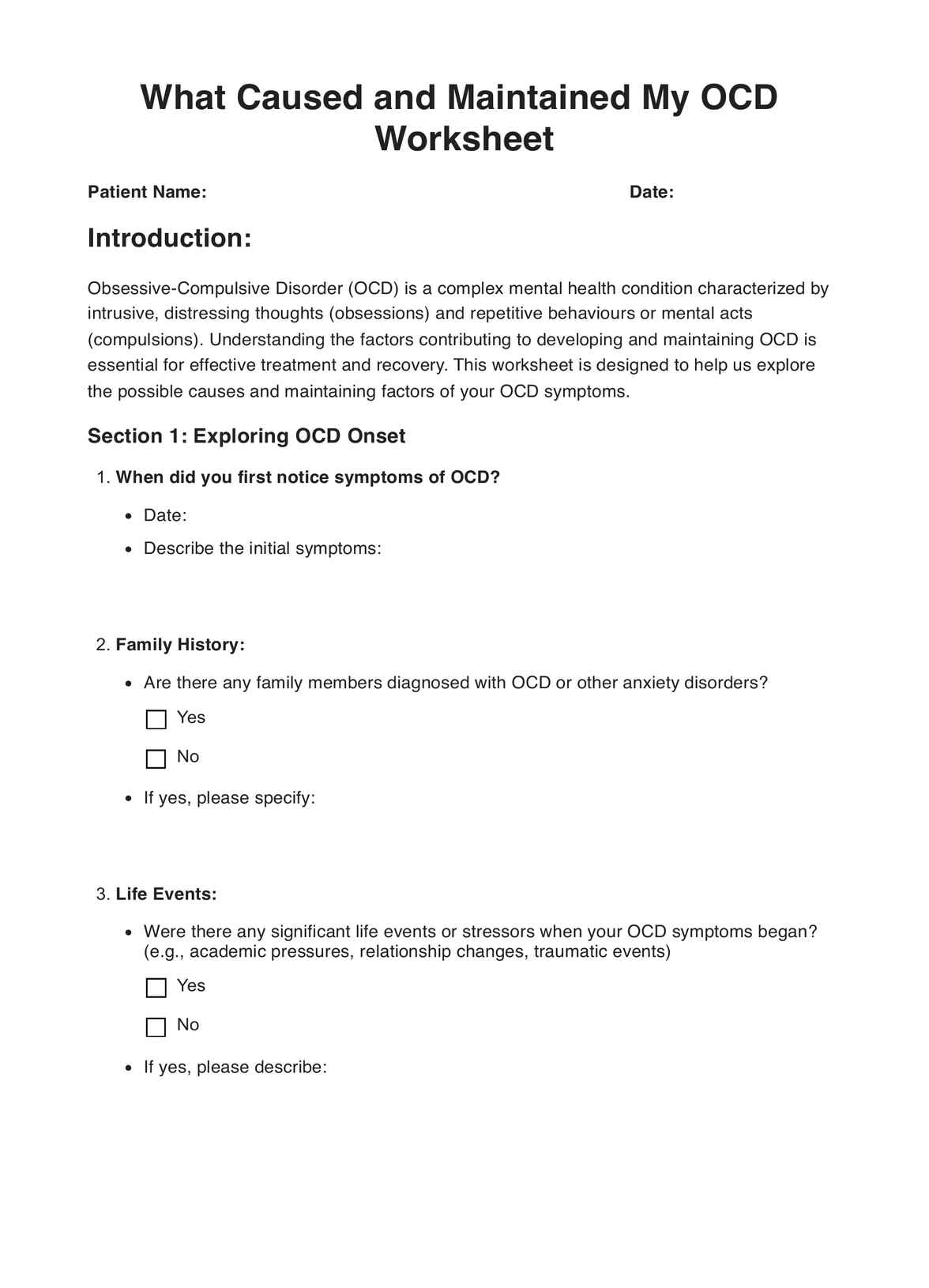The time it takes to complete this worksheet varies significantly from person to person and session to session. Several factors can influence the amount of time spent on this worksheet, including the complexity of the client's OCD symptoms, the depth of exploration required, and the client's willingness and ability to engage in self-reflection and discussion. It may take one to two sessions for clients to complete this worksheet.

What Caused and Maintains My OCD Worksheet
Explore the factors that cause and maintain your client’s OCD through our What Caused and Maintains My OCD Worksheet. Download our free PDF now!
What Caused and Maintains My OCD Worksheet Template
Commonly asked questions
This tool can help you and your client by helping you understand the factors contributing to developing and maintaining your client’s OCD. This understanding aids in treatment planning and monitoring. It also facilitates building a positive therapeutic alliance, fostering collaboration and trust between you and your clients.
This tool can be used in a wide range of settings. Therapists employ this in OCD assessments and treatment planning. This is incorporated into the therapeutic practice to aid therapists in understanding the OCD symptoms of their clients. Apart from that, this can also be used to track treatment plan effectiveness.
EHR and practice management software
Get started for free
*No credit card required
Free
$0/usd
Unlimited clients
Telehealth
1GB of storage
Client portal text
Automated billing and online payments











